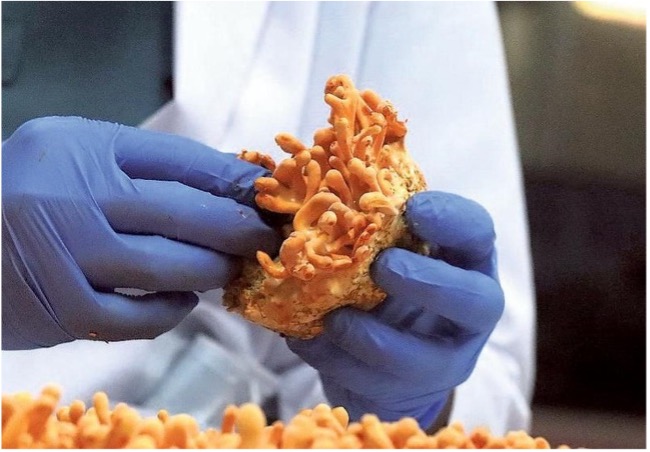Published on: November 5, 2022

Gold-mushroom
Gold-mushroom

Why in news?
Assam’s Bodoland University is part of collaborative research on a fungus-powered biosynthesised nanogold particles that has received an international patent from Germany
Highlights:
- Medicines may have traces of ultramicroscopic gold powered by a super mushroom for greater efficacy
- Cordy gold nanoparticles (Cor-AuNPs), are the outcome of a collaborative experiment by scientists from India and Germany.
- Cor-AuNPs are derived from the synthesis of the extracts of Cordyceps militaris and gold salts.
- It could make drug delivery in the human body faster and surer
- It is a high-value parasitic fungus, lab-grown at the Department of Biotechnology’s Technology Incubation Centre (TIC) in Bodoland University
- Gold salts are ionic chemical compounds of gold generally used in medicine.
Cordyceps militaris
- They are called super mushroom for its tremendous medicinal properties, adds bioactive components to the synthesis of gold nanoparticles for better penetration
- They are found in the eastern Himalayan belt
- It is a potential harbour of bio-metabolites for herbal drugs and evidences are available about its applications for revitalization of various systems of the body from ancient times.
- The constituents, especially the anti-cancer agent are expected to play evolutionary roles in the pharmacognosy sector in future
What are its uses?
- Biosynthesised nanogold particles indicate a new application of nanoparticles in the development of therapeutic drugs that can be delivered as ointments, tablets, capsules, and in other forms.
What are Nano gold?
- Gold nanoparticles are small gold particles with a diameter of 1 to 100 nm which, once dispersed in water, are also known as colloidal gold.
- It is generally found in a colloidal solution because gold nanoparticles are created by citrate synthesis. This process involves mixing solutions together to result in the precipitation of gold nanoparticles into solution.

